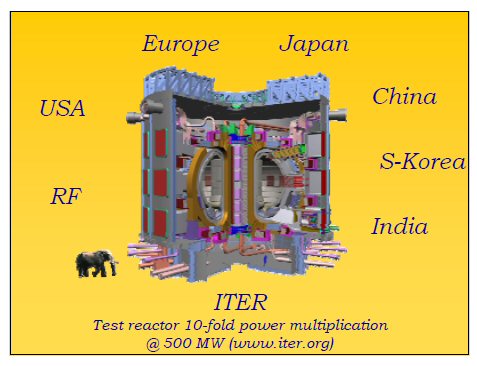Full Financial Disclosure for ITER Reactor Could Be Painful
Return to ITER Power Facts Main Page
By Steven B. Krivit
June 7, 2022

Deceptive claim of a tenfold reactor power gain from Niek Lopes Cardozo
New Energy Times has just located a Nature magazine editorial about ITER from 2009 that is as relevant today as it was 13 years ago. The Nature editors called for full financial disclosure about the project, even though it “could be painful.”
The editorial, about the International Thermonuclear Experimental Reactor, was subtitled “Taxpayers deserve to know the cost of ITER, the international fusion project they are paying for.”
The editors summarized the cost as they best knew it then:
The original cost estimate for ITER was €5 billion (US$7 billion) for construction and the same amount again to operate it for 20 years. But costs are rising, and the schedule is growing ever more drawn out. Educated guesses now put the construction costs at roughly €10 billion. … These guesses might be the closest that anyone will get to knowing ITER’s true cost.
The editors objected to the opacity of the financial reporting by the ITER organization:
It is deeply unfair to those who will ultimately pay for the project — around half of the world’s taxpayers. These citizens have a right to know how much their countries are paying in the quest for fusion energy. The seven members of ITER should explicitly commit themselves to providing cost estimates for their in-kind contributions to the project. The central organization should collect and review those estimates, and it should then make them available to the public, both individually and as a collective price tag.
The editors called for full financial disclosure:
Full financial disclosure could be painful. It is likely to show that the reactor is costing far more than originally promised and that some countries are paying more than others for the same components. Those revelations could lead the public to ask numerous questions — including whether fusion can deliver affordable electricity on a timescale that anyone could deem germane.
Such questions are difficult to answer, but they must be asked of every energy technology if humanity is to tackle the climate and energy challenges ahead. The only way to decide fusion’s role in resolving these challenges is via an honest public debate. And that debate cannot take place without a transparent price tag for the world’s first fusion reactor capable of producing net energy.
The editors were correct. Full disclosure would and did reveal a discrepancy.
In 2018, eleven years later, as reported by David Kramer in Physics Today, the U.S. Department of Energy estimated that the total cost — at that time — just to build but not operate was $65 billion: ten times the original cost. That was before we learned earlier this year of the damage to the first four (of nine) sectors of the reactor vacuum vessel.
After the ITER agreement was signed in Paris on Nov. 21, 2006, construction to the point of first plasma was supposed to take 10 years. But rather than 2017, the best estimate for first plasma was 2031, as we reported last year. But the 2031 date was before a French nuclear regulator ordered the shutdown of the reactor assembly activity.
After first plasma, if and when it is achieved, additional construction will be necessary for the first wall components needed for deuterium-tritium experiments. Rather than 10 years, it is looking more like 35 years for full construction of this behemoth.
And it will be for naught. Regardless of the price tag, ITER is not designed, as the fusion scientists told Nature, to be “the world’s first fusion reactor capable of producing net energy.” That’s what the fusion scientists told everyone.
Even if ITER works as designed, the ITER reactor will not be capable of producing net energy, as we revealed on Oct. 6, 2017. Half the world’s taxpayers have unknowingly paid for this swindle, the most expensive science experiment on Earth.

